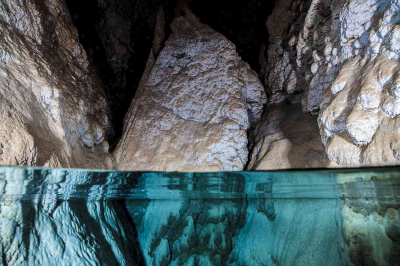
Fossil water is the ancient freshwater that got trapped underground in huge reservoirs or aquifers. This water may have been locked in for over thousands of years and remain undisturbed. It can be found across the globe, be it in arid, semi-arid, humid regions, or even regions of permafrost.
Ever heard of fossil water? You may be aware of fossils. So going by the terminology of fossils, does fossil water mean that the water is really old?
Well, fossil water or petrowater or paleowater is the water that is trapped among the rocks underneath for millennia. It is the ancient freshwater that got trapped underground in a huge reservoirs or aquifer (a geological formation comprising an underground layer of porous rocks where water can be stored) in an undisturbed space.
One aquifer in Libya, has been carbon-dated to 40,000 years ago. It has only been a few decades since we started accessing fossil aquifers. In water-deprived areas and dry climates, these have become sources of water.
Presently, billions across the world are dependent on water from fossil aquifers for drinking as well as irrigation purposes.
Location and formation
Fossil water can be found across the globe, be it in arid, semi-arid, humid regions, or even regions of permafrost. An example of fossil water would be the Nubian Sandstone Aquifer System which is the biggest fossil aquifer in the world.
How and when did fossil water form? Fossil water formed during the last glacial ice age. Water got collected from melting ice and prehistoric lakes, as it seeped into the subterranean layers of rocks and sand in old aquifers.
As time went by, these got filled with sediment and thus got isolated, thereby sealing off the water from Earth’s surface. They remained there, unaffected and undisturbed for tens of thousands of years. But we don’t know how much of this water exists.
How sustainable is fossil water
Fossil water is trapped in layers of impermeable rocks and clay. As such they cannot absorb precipitation. So once depleted, they cannot be replenished easily.
Further, some pockets of fossil water are located in deserts and cannot be replenished due to the absence of enough annual precipitation. For instance, consider the Ogallala aquifer. Once it is fully mined, it is said that it would take over 6,000 years to replenish it.
Future of fossil water
The old groundwater is becoming an option in some water-strapped nations. If we continue extracting fossil water mindlessly, then the area’s water table goes down permanently.
As this water is non-renewable, there is always a risk of these aquifers going dry. Meanwhile, if it remains unaffected by human activities, then it can remain in equilibrium.
But can you drink ancient groundwater? Since this water has been around for thousands of years, like anything that has been around for millennia, this water would taste different too. Natural chemicals also get leached into it. They can be salty and contain contaminants such as iron and manganese. They need to be treated to be used for drinking purposes.
Picture Credit : Google


